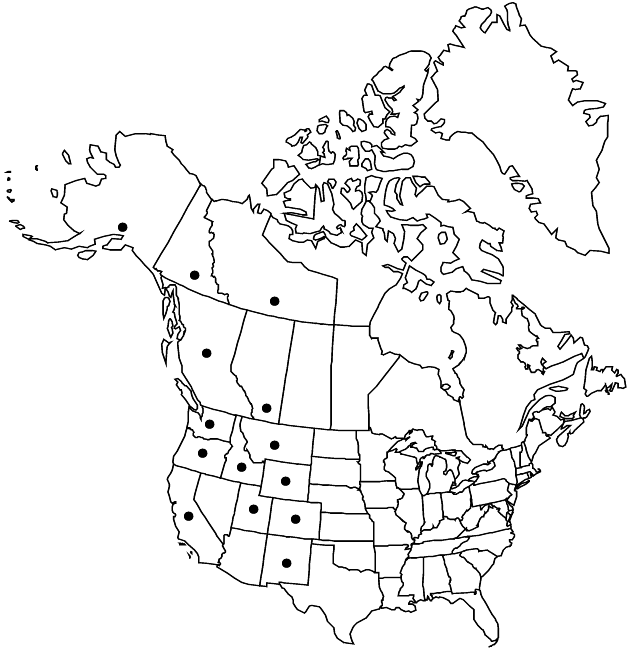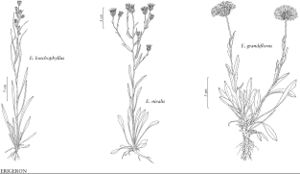Erigeron nivalis
Trans. Amer. Philos. Soc., n. s. 7: 311. 1841.
Biennials or short-lived perennials, 5–25(–35) cm; usually fibrous-rooted, sometimes taprooted, caudices simple or branched, sometimes weakly short-rhizomatous. Stems erect to basally ascending, sometimes sparsely hirsuto-villous, minutely glandular. Leaves basal (persistent) and cauline (petiole margins coarsely ciliate); basal blades oblanceolate to spatulate, 20–60 × 2–6(–10) mm, cauline gradually reduced distally, margins entire or rarely with 1–2 pairs of shallow teeth, faces sparsely hirsuto-strigose, eglandular. Heads 1–6(–8) in corymbiform arrays (on curved-ascending peduncles). Involucres 5–6 × 8–11 mm. Phyllaries in 2–3(–4) series (inner apices attenuate to caudate), sparsely hirsuto-villous or glabrous, minutely glandular. Ray (pistillate) florets in 2 series; outer 40–70, corollas white to pinkish 5.5–7 mm, laminae (filiform) erect, not coiling or reflexing; inner many fewer than outer series, tubular, elaminate. Disc corollas 4.4–5.5 mm. Cypselae 2–2.3 mm, 2-nerved, faces sparsely strigose; pappi: outer of setae, inner of (12–)14–21 (accrescent) bristles. 2n = 18.
Phenology: Flowering May–Aug.
Habitat: Rocky sites, gravel bars and banks, roadsides, meadows, open woods, up to subalpine areas with spruce in Rocky Mountains
Elevation: 1200–3700 m
Distribution

Alta., B.C., N.W.T., Yukon, Alaska, Calif., Colo., Idaho, Mont., N.Mex., Oreg., Utah, Wash., Wyo.
Discussion
Erigeron nivalis usually has been treated as an infra-specific taxon within E. acris; the two are broadly sympatric in the northwestern United States and Canada without obvious intergrades. Both occur over a wide range of elevations and in similar habitats. Erigeron nivalis probably occurs in Nevada; it has not been taxonomically distinguished there. Erigeron scotteri was regarded by E. H. Moss and J. G. Packer (1983) as a synonym of E. acris (presumably var. debilis = E. nivalis; the heads are relatively small and borne singly).
Selected References
None.
